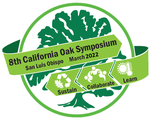#55

Timothy J. Vendlinski, Independent “Oak Saver” and Urban Creek Conservationist
We are quickly losing the last of our original, legacy remaining in California’s urban areas. The trees have been exposed to multiple anthropogenic stressors, including reckless development patterns, paving and turfing; and more recently, the spread of pests and pathogens, unrelenting drought, excessive heat, and the dramatic loss of soil moisture. Even when municipal codes confer protections to legacy oak trees, the codes are not rigorously enforced, making otherwise healthy trees vulnerable to avoidable damage during construction activities, and the routine maintenance of parks, roadsides, and other built environments. Further, municipal tree programs do not protect the wild progeny of legacy trees, nor do urban foresters prioritize the planting of locally-sourced oaks in their approved street tree programs. For decades, urban foresters have placed the emphasis on planting non-native trees and cultivars - trees that provide only negligible benefit to wildlife, and no substantial contribution to biological diversity.
This paper makes the case for prioritizing the planting of native oaks as part of our municipal tree programs, and urges that we conserve the genetic wealth of legacy oaks that is so perfectly encapsulated by their acorns, and so remarkably expressed as wild seedlings growing across untended swaths of our urban landscapes. We can leverage the available cost-effective tools and methods to make native oaks the centerpiece of almost every municipal tree program in California. Oaks can be added to already canopied districts as replacement trees, and bring much needed shade, temperature relief, and equity to barren neighborhoods and marginalized communities. Wild oaks germinated from our legacy trees possess the genetic wealth to connect us materially to the past while providing an ecological bridge to the robust, urban forests of the future.
